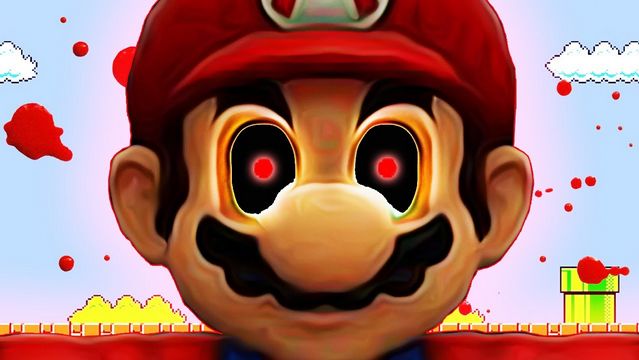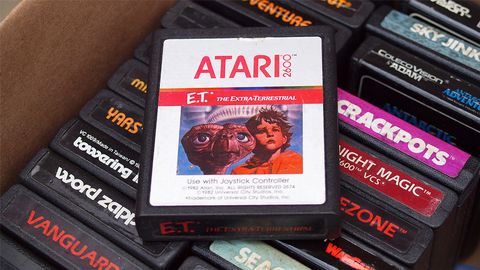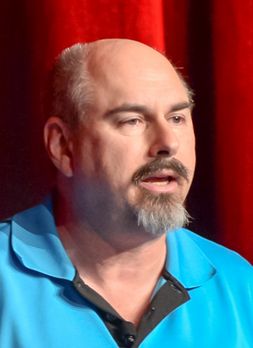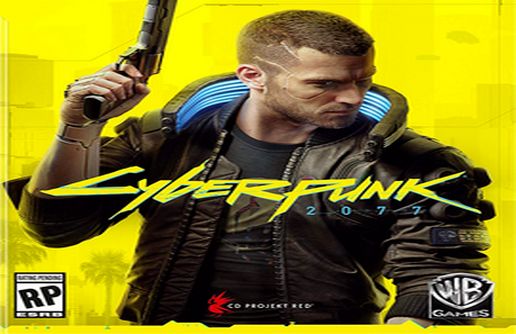| Previous
Page |
PCLinuxOS
Magazine |
PCLinuxOS |
Article List |
Disclaimer |
Next Page |
Crunch Time: The Dark Side Of Video Games |
|
by Agent Smith (Alessandro Ebersol)  Have you ever wondered how many people sacrificed themselves so that you could defeat Bowser on your NES? Or Dr. Robotnik on your Sega Genesis? Well... You must be asking yourself: Sacrifice? What is this all about? Video games are just fun, where nobody gets hurt... I'm sorry to burst your bubble, but unfortunately, people get hurt in video games, and even die. Sadly, video games have a very dangerous dark side that few people talk about. I am referring to Crunch Time. What is Crunch Time? Crunch time is an old term. According to the definition, from Stanford University's Crunch Crunch Mode: Programming to the Extreme project: "Crunch mode," also called "crunch time," is the term used by those in the software development industry to describe working overtime for long periods of time in order to complete a project or meet a deadline. It is associated with management expecting employees to work 50, 60, 70, and sometimes even 80 hours a week for months on end. Crunch time, however, is not something new. In fact, it is something very old that has been happening ever since software development became a commercial activity. And, it is known by another name as well: Death March, which shows that it is not pleasant at all. Crunch time already existed, even before the software industry The attention on crunch time and the terrible working conditions in the software and games industry was brought to light by the famous letter from EA's spouse (ea_spouse), in a livejournal post that is accessible until today. But strenuous and extremely stressful work in this industry goes back a long way. And, we can cite several cases of Crunch Time, before the term was even coined. And, we can trace a line back to the days of the Atari 2600... ET - The Extra-Terrestrial, the alien that destroyed Atari  Considered by many to be the worst game in history, E.T. the Extra-Terrestrial, for the Atari 2600, has a curious story, one of great pain, suffering, tight deadlines and employer pressure. It is unfair to only call it the worst game without knowing this story. And, there is a lot of crunch time involved in it. The development of ET, the Atari game Following the commercial success of E.T. the Extra-Terrestrial in June 1982, Steve Ross, CEO of Atari's parent company Warner Communications, began negotiations with the film's director, Steven Spielberg, and its distributor Universal Pictures to acquire a license to produce a video game based on the film. Later that month, Warner announced its exclusive worldwide rights to market coin-operated games and consoles based on E.T. Although the exact details of the transaction were not disclosed in the announcement, it was reported later that Atari had paid $20-25 million ($56-70 million when adjusted for 2022 inflation) for the rights, a high figure for video game licensing at the time. When asked by Ross what he thought about making a video game based on E.T., Atari CEO Ray Kassar replied, "I think it's a dumb idea. We've never made an action game out of a movie." An arcade game based on the E.T. property had also been planned, but this was considered impossible given the short time frame. On July 27, 1982, after negotiations were completed, Kassar called Howard Scott Warshaw to commission him as developer of the video game adaptation. Kassar informed him that Spielberg specifically asked for Warshaw and that development had to be completed by September 1st to meet a production schedule for the Christmas season. Tight deadlines + Too much pressure: Flop The problems started early, as he was only given five weeks to go from concept to final product. Warshaw was assisted by Jerome Domurat, a graphic designer at Atari.  Howard Warshaw, 2015 Although the game was finished on time, it was poorly received and seen as confusing and frustrating. Atari took a large financial loss on the project which, combined with the company's other poor business decisions and the video game crash of 1983, led to the company being split up and sold within two years. During this time Warshaw developed and almost finished another game called Saboteur. He left the company before it was completed. It was then re-adapted to a game based on the television series The A-Team, but this also remained unfinished. Atari was disbanded before either version could be released. So, the failure of this specific game completely changed the landscape of the (then) nascent and booming videogame industry. With the colossal flop of ET, the game, the industry went into decline, which would only be reversed years later with the entry of Japanese Nintendo into the American market with the NES. Many wonder if the developer had had more time, more people on staff, how the game could have been different? But pressures, tight deadlines and a lot of money at stake were ingredients for a failure that cost a lot: An entire industry was destroyed. And Howard Warshaw never programmed a game again. He went on to work in film, documentaries, and more recently became a psychotherapist, having written two books about his experiences as a game developer. Well, we will see below that changing careers is one of the effects of crunch time. But there are still stories to be told about crunch time. Follow me and we will see how the crunch took over the life of a young Japanese developer. The guy who committed suicide because of a game SuperGrafx had a brief life in Japan, where it died after just over half a dozen games were released. Strider was not one of them. Although prototypes are rumored to exist, the SuperGrafx Strider never saw the light of day. Eventually a port to NEC's PC Engine Arcade Card was released in the mid-1990s, but it looked much worse, compared to even the flawed Sega Genesis version. It was this failure to surpass even the quality level of the Genesis/Megadrive that apparently drove one of its programmers to suicide. Although this is a completely unfounded rumor, there are very reliable sources that tell that one of the programmers took his own life in a bout of depression supposedly caused by the poor quality of the game. And, the EA spouse brought this massacring practice to light In 2004, the EA spouse I mentioned above wrote an expose on the practices of video game publisher Electronic Arts. The person who used the pseudonym EA spouse, would be revealed in 2006 to be Erin Hoffman, a game developer who wrote about how various forms of crunch were destroying her fiancé's life, attacking Electronic Arts for practices she said were unethical and illegal. The blog went viral, causing widespread outrage.  Erin Hoffman, 2007 In the famous post, she wrote: "Now, it seems, is the 'real' crunch, the one for which the producers of this [video game] title so wisely prepared their staff by running them into the ground ahead of time. The current mandatory schedule is 9am to 10pm -- seven days a week -- with the occasional Saturday night free for good behavior (at 6:30pm). This averages eighty-five hours of work per week. Complaints that these once again extended hours combined with existing staff fatigue would result in a greater number of mistakes being made and an even greater amount of wasted energy would be ignored." She continues: "Not soon after he started work, he was working under "soft" conditions of 8 hours a day, six days a week. The team was told that by working these extra hours, they would avoid the big crunch associated with the end of a project. The managers had even set a date on which this light crunch would end. The date passed and other established dates also passed; the next change in the schedule was a change to 12-hour days, six days a week. People started getting sick." And, no, things didn't get better... But at least the workers were compensated. The case against EA Hoffman's actions, in part, led to the filing of three class actions against EA and some industry-wide changes in general, such as the reclassification of entry-level artists as hourly employees, thus making them eligible for overtime under California law. Her then-fiancé, EA employee Leander Hasty, was the lead plaintiff in the successful class action lawsuit on behalf of EA's software engineers, which in 2007 awarded the plaintiffs $14.9 million for unpaid overtime. After the case and the lawsuit, Hoffman and Hasty founded GameWatch, a watchdog organization designed to facilitate discussions between employees of different companies. It was shut down in 2012. How does crunch time happen? Another professional in the field, Joe Straitiff, a software engineer who was transferred to EA due to a merger, posted his frustrating experiences at EA on another blog, noting that "you can't spell ExploitAtion without EA." In his personal blog, Straitiff described the intense pressure to work long hours that he and his fellow employees had to deal with at EA. Straitiff's manager hung a neon sign reading "7 Days Open" in the staff common area and regularly emailed employees telling them that he would "see them over the weekend." Straitiff describes his routine, working 14-hour days to meet goals for his project, coming home well after midnight and staying up half the night caring for his sick baby daughter, and then being harassed the next day at work for arriving at 11:30.  Joe Straitiff During his time at EA, Straitiff's relationship with his wife and daughter became extremely strained. When the EA employee was home, his daughter was usually asleep. Straitiff was often so tired from working all day that he had little energy to do anything recreational in what little free time he had. Erin Hoffman said similar things about her partner, stating that he often came home with "a headache that wouldn't go away and a chronically upset stomach." But with all these problems, is Crunch still worth it? No, not at all. Let's see: Imagine a team of programmers, all red-eyed, sleep-deprived, and, of course, because of this making mental mistakes that lead to bugs that break the game and cause even more work for the rest of the team. There is not much data on this subject, but a recent study by a group called The Game Outcomes Project found that crunch time led to less successful games - even though one of their indicators of success was the very imperfect Metacritic aggregate tool. Paul Tozour of The Game Outcomes project writes: "Our study seems to reveal that what really generates "outstanding results"-the factors that really make great games-has nothing to do with mere "effort" and everything to do with focus, team cohesion, compelling direction, psychological safety, risk management, and a host of other cultural factors that enhance team effectiveness." In other words, all this crunch time may be making the games worse. Anyone who has worked in a creative field knows that tight deadlines and occasional all-nighters can sometimes work miracles, but caffeine and adrenaline are not enough to fight off the exhaustion of outrageous hours of work for weeks or months on end. Whether you're writing dialogue or modeling characters, sleep deprivation can have a serious negative impact on what you're trying to accomplish. And the Crunch affects workers profoundly Combined with the abusive work culture within certain game studios, the effect of frequent overtime can result in more and more game designers leaving the industry entirely as the passion is driven out of them one by one, leading them to find a new career or an early retirement from the field of video game development. According to statistics covered in the "State of the Industry 2019: Mental Health in the Game Industry report": "only 1/3 of developers remain in the industry for 10 years or more," with the average tenure lasting three to six years. The damage that crunch time does to an individual's psyche spills over into their life outside of work in the games industry, with developers working 80+ hour weeks and sacrificing their lives outside of their project. An adverse effect of this additional mental wear and tear can even lead developers to suffer from PTSD due to the subject matter of their particular project. Crunch time still happens today  Cyberpunk 2077, game famous for its bugs and crunch time Even nowadays, crunch time still happens too often. One famous case is that of the game Cyberpunk 2077. Cyberpunk 2077, one of the most anticipated video games of the last decade, has been delayed three times. The employees of CD Projekt Red, the Polish studio behind the game, were forced to work long hours, including six weekdays, for more than a year. However, the practice of crunch time had been abolished at the company, as its co-founder Marcin Iwiński declared: he said that his company considered itself more humane than its competitors. While overtime would be allowed for those interested in working it, crunch would not become "mandatory." He called it a "non-mandatory crunch policy" and said it was something to be proud of. "We're known for treating players with respect," Iwiński told Kotaku in 2019. "And I really [wish] that we were also known for treating developers with respect." A month later he restated his words, but promising during a podcast that mandatory crunch would not be imposed on his employees. Shortly thereafter, signs began to emerge that the Cyberpunk 2077 project was in trouble. In January 2020, CD Projekt announced the first delay of the game. The release date was moved from April to September. The multiplayer component was also pushed back to at least 2022. Six months later, the game was delayed for a second time - from September to November. Again, Iwiński and Adam Badowski, head of the studio, said that more time needed to be spent polishing the final game. The COVID-19 pandemic was partly to blame for the delays. CD Projekt released Cyberpunk 2077 for PlayStation 4, Stadia, Windows and Xbox One platforms on December 10, 2020, followed by PlayStation 5 and Xbox Series X/S on February 15, 2022. The game was praised by critics for its narrative, setting and graphics while some of its gameplay elements received mixed reviews. The game was also widely criticized for the presence of bugs, especially in the console versions, which suffered from performance issues. Sony removed the title from the PlayStation Store from December 2020 until June 2021 while CD Projekt worked to fix problems. CD Projekt was subject to investigations and class action lawsuits in the courts due to its attempts to minimize the severity of the technical problems prior to release; these were ultimately compensated with a $1.85 million dollar settlement. This nefarious practice extends to other branches of the information technology industry. Recently Elon Musk bought the micro-blogging social network Twitter and has stated that he will fire all those employees who fail to meet the required deadline.  Supposedly, Musk simply counted LOC (lines of code) produced over the past year and fired half of the underperforming developers, with 75% of the non-technical moderation team. He firmly believes that Twitter will straighten itself out. He demands that the remaining workers work 80-hour weeks in the office. Several programmers and computer engineers have since resigned, so they are calling back the fired employees telling them that their names came up by mistake... What are the causes of crunch time? Basically, the causes of Crunch time, as enumerated by Jason Schreier, in his book Blood, Sweat, and Pixels, are as follows:
But, the biggest cause of Crunch is poor management. Whether at the highest executive level, setting unrealistic deadlines, deadlines that cannot be met, the leadership level of bosses who do not manage their teams well, project management where work is being done inefficiently, or product management where the wrong work is being done. How to avoid Crunch time? Well, since this is an old practice already, game industry workers are starting to move in search of better working conditions, or are quiet quitting or even abandoning their careers, as the 2019 study I mentioned above showed. The developer, 3D or 2D artist, programmer, should look for companies that do not sacrifice their employees, and several indie studios are already going in this direction, making their projects realistic and responsible. The result? More quality of life for the employees and more quality of the final product for the game publishers. And, we, as gamers and enthusiasts, how can we help? Simple... Do you remember the boycott of western products, made in Bangladesh, with child labor? Like the Adidas balls? What did the consumers do? They boycotted Adidas, until they stopped employing child labor. The same thing applies to us gamers and enthusiasts: Don't buy games from studios that force crunch time on their employees. It's as simple as that. Vote with our wallets for better, more humane studios that produce not only good games, but good working environments. What prompted me to write about crunch time was an article I wrote in the June 2022 issue about Psychonauts 2, where developer Tim Schafer stated that there was no crunch time in the development of Psychonauts 2, showing that he, as head of the studio, cherished the health of his collaborators. And now that we've reached the Christmas season, when we buy gifts for others as well as ourselves, let's remember, before we buy any games, all those who suffered so that we could have fun, let's honor them, and choose companies that respect their employees. Let's make a merry Christmas for these workers, and, as with child labor, let's also wipe crunch time off the face of the earth. Friends, I bid you a fond farewell. 2022 was a year of ups and downs, of illnesses and crises, of wars and plenty of misfortunes. But, we managed to finish it alive. And, we are ready for the next level. Let 2023 start! Happy Holidays and a great new year! |



